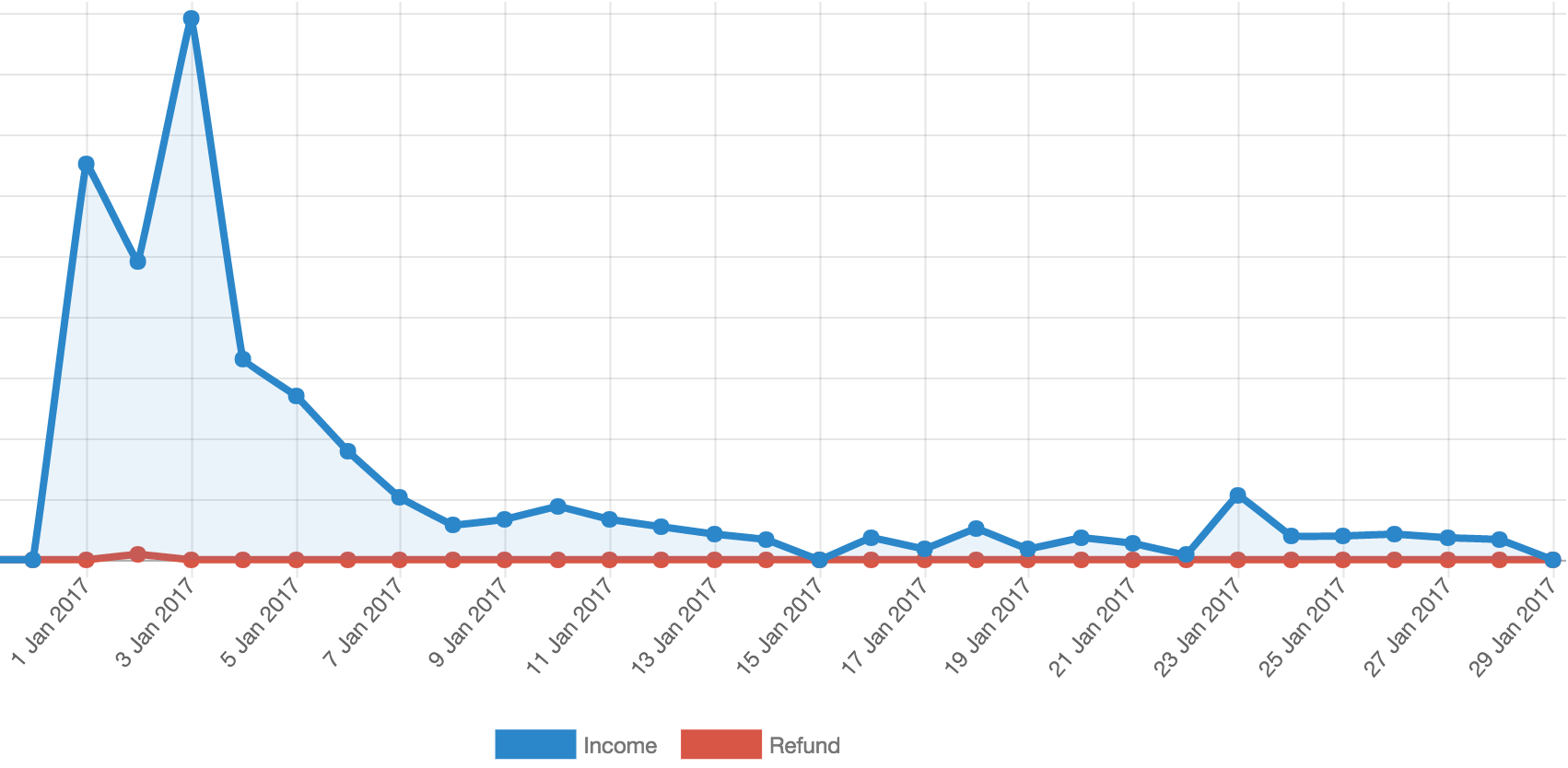Breaking Even
/101
My last post was a behind the scenes report on writing my book, Front-end Style Guides. It had this whole section about finances which I didn't feel ready to share, so I put it to one side. I'm still not sure whether it's a good idea (writing about money feels weird), but I want to be transparent if it'll help others.
The original version of Front-end Style Guides sold at £2. I think it was a 50/50 split between me and the publisher. I sold something like 1,000 when I was with them, and around 2,000 when I was selling it on my own (for a lot longer period of time). There was a big spike when it first went on sale, and then it was steady trickle from there, making enough to buy me a decent lunch at Pret every week (I'm a sucker for those packets of dried mango). It wasn't much, but any passive income is nice.
So, there are some fees I have to pay to sell my book. First, there's SendOwl's fee, which is a very reasonable $9 a month, and they handle the checkout flow from clicking the "buy" button to showing the customer a page where they can download the files. And there are charts that show me how many books have sold. And they create a VATMOSS report for me which shows which EU states people have bought the book from and how much tax I need to pay to each one. Which is a matter of pence in a lot of cases but I still have to dedicate an hour a quater to filling out the form and paying the taxmen a total of maybe 20 euros. Annoyingly, e-books are VATable, unlike physical books, which would make all this work uncessesary.
The book is now selling at $8. I switched to dollars because most people who buy my book are in the States. That might piss off some of my fellow Brits… sorry. I have to pay some currency conversion fees, which is inevitable, but still worth it. I give people the option of using PayPal or Stripe to check out. PayPal charges higher fees, but they send me the money more quickly, and that's the provider that most people buying my book choose.
I'm no longer selling on any 3rd party sites because it's less work when it comes to accounting – I don't have to pull in tax reports from several different sources. I also don't want 3rd parties to undercut my own website.
The increase in price is because of the higher up-front costs, and because I've put a lot of unpaid work into the research that went into it over the years. The new book cost me £2,000 to produce – including editor fees, design work and the price of the ISBN and the fonts I used. In order to break even, I knew I'd have to sell around 320 books. It's not a clean calculation because depending on which gateway and currency people use, I might get slightly more or less.
I launched on January 1st, which was a terrible day to launch because so many people aren't at work, and are too hungover to look at their screens let alone read a whole book. But I did it anyway because I'd had this thing hanging over me for most of the previous year and I wanted to kick off the year on something postive. The sales were good, but they were even better on the 3rd. I threw a bit of money at Twitter ads to see if that would make a difference (it didn't, but it was interesting to see how it works).

By the 6th, I'd broken even. I'm now seeing the numbers plateu after the launch spike, and I'm hoping sales will be steady like this over time. The book isn't going to make me rich, but it will mean I can keep buying packets of mango from Pret, and maybe one of those praline cookies, too.